Shropshire
Explore hidden histories, historic photos, and things you never knew about Shropshire from the collections and archives of Historic England.
Discover your local listed buildings and places
Introducing some of Shropshire's most historic sites, included in the National Heritage List for England. Some of these captions have been summarised by AI. Click through for the official List entry. Skip this section and go to place by numbers
Newport War Memorial
Newport
First World War memorial, designed by A E Lloyd Oswell and Iredale, unveiled on 3 April 1924, with further names added after the Second World War.
Linley Hall
More
Linley Hall, a Palladian country house built in the 1740s, features extensive parkland and drives enhancing its scenic countryside setting. It remains in private ownership as of 1998.
Llwyd Mansion, 1-3 Cross Street
Oswestry
House, built in the mid- to late C15, remodelled in the early C17 with the addition of a third storey. Read the official list entry to find out more.
Remains of the Old Church of St Chad
Shrewsbury
Remains of the Old Church of St Chad which comprise the chancel's south wall and the south transept's east wall, both C12, and the late-C15 Lady Chapel, the latter being altered in the C16...
Red Castle: an enclosure castle in Hawkstone Park
Weston-under-Redcastle
The monument includes the standing structural, earthwork and buried remains of Red Castle, an enclosure castle, situated within Hawkstone Park.
Caer Caradoc large multivallate hillfort, associated caus…
Church Stretton
Caer Caradoc features a well-preserved Iron Age hillfort with a unique design incorporating natural rock outcrops and a causeway, reflecting significant social organization and defensive...
Davenport House
Worfield
Davenport House, built around 1727, is a historic manor designed by Francis Smith, surrounded by a rococo landscape and structures, painted by Thomas Robins.
Battle of Shrewsbury 1403
Astley
The site of the Battle of Shrewsbury (1403) which saw the army of King Henry IV defeat a rebel army led by Sir Henry 'Hotspur' Percy. Read the official list entry to find out more.
Bodbury Ring: a large univallate hillfort on the summit o…
Church Stretton
Bodbury Ring, a well-preserved Iron Age hillfort, displays significant earthworks and archaeological value, offering insight into historical land use and regional structure.
The New Market Hall
Bridgnorth
A former market building and assembly rooms, built from 1855-1859 to the designs of Robert Griffiths of Quatford. Read the official list entry to find out more.
Badger Dingle
Badger
Badger Dingle, landscaped by William Emes, has historical significance linked to prominent figures like Isaac Hawkins Browne and James Wyatt, and features picturesque gardens.
Quarry Park, and Dingle Gardens Shrewsbury
Shrewsbury
Quarry Park in Shrewsbury, laid out with tree-lined walks in 1719, became a celebrated promenade visited by notable figures like Johnson and Boswell. It hosts an annual Flower Show.
Shrewsbury Flaxmill Maltings: Flax Warehouse
Shrewsbury
Warehouse of c1810. Part of a former flax mill designed by Charles Bage, and owned and operated by Marshall, Benyon and Bage.
Oakly Park
Bromfield
Oakly Park, landscaped in 1772 by William Emes, features historic gardens and a Grade II listed house. The park includes ornamental woodlands and a kitchen garden from 1820.
Rowley's House and Rowley's Mansion
Shrewsbury
A pair of houses built in the late 16th and early 17th century, these buildings now contain a museum.
Shrewsbury Flaxmill Maltings: Cross Building
Shrewsbury
Heckling building of 1812 which may incorporate some late-C18 fabric; altered late C19 during conversion to a maltings.
Wrekin Rifle Range
Little Wenlock
A late-C19/early-C20 military rifle range which is located to the south east of the roadway called Wrekin Course. Read the official list entry to find out more.
Shrewsbury Flaxmill Maltings: Malting Kiln
Shrewsbury
Former maltings kiln, 1896-7 designed by Henry Stopes. Within a former flax mill complex that was converted to a maltings in 1897-8 and closed in 1987.
Former Her Majesty's Prison Shrewsbury
Shrewsbury
A prison complex of three conjoined wings, set within a walled enclosure, of 1788-93 by John Hiram Haycock, with assistance from Thomas Telford and John Howard, and of 1883-88 by the Prison...
Church of St Peter
Edgmond
The Church of St Peter dates to the 14th and 15th centuries, featuring gothic elements like embattled aisles, a decorated chancel, and a broad west tower.
Pontcysyllte Aqueduct and Canal
St. Martin's
The official listing for all World Heritage sites is held by UNESCO and can be found on their website.
Shrewsbury Flaxmill Maltings: Dyehouse and Stove House
Shrewsbury
Former Dyehouse and attached Stove House, dating from the early 1850s and pre-1810 respectively. Dyehouse altered in late C19, and Stove House enlarged and rebuilt in the 1840s.
Wenlock Abbey
Much Wenlock
Wenlock Abbey features a late 19th/early 20th-century garden with topiary, lawns, and specimen trees, restored into a gentleman's country house by James Milnes Gaskell.
Church of St Gregory
Morville
The Church of St Gregory is a Grade I listed collegiate church featuring a late Norman chancel, an early Norman chancel arch, and a tall western tower with flat buttresses.
Acton Burnell Hall (Concord College)
Acton Burnell
Acton Burnell Hall, now Concord College, is a Neo-Classical style country house, largely rebuilt in 1915 after a 1914 fire, featuring a chapel and ornamental grounds.
Ludlow Castle
Ludlow
Ludlow Castle, the standing structural, earthwork and buried remains of an enclosure castle, converted into a tower keep castle in the C12. Read the official list entry to find out more.
Shrewsbury Flaxmill Maltings: Stables and remains of Pack…
Shrewsbury
Former stables, of the early C19 with minor late-C19 and mid-C20 alterations, and the remains of a packing warehouse of c1800; largely demolished in 1979.
Atcham Bridge
Atcham
A former road bridge, known as Atcham Bridge (old) dating from 1769-1771, designed by John Gwynne of Shrewsbury for the County of Shropshire. Read the official list entry to find out more.
Church of St. Catherine
Eyton upon the Weald Moors
A Georgian red brick church from 1743 features an 1850 apse, restored nave windows, and holds 15th-16th century stained glass fragments.
Shrewsbury Flaxmill Maltings: Apprentice House
Shrewsbury
Former apprentice house of c1811 with late-C19 and C20 alterations.
Shropshire War Memorial
Shrewsbury
First World War memorial by George Hubbard, with sculpture by Allan Wyon, erected in 1922. Additional dedications to the Fallen of later wars added after 1945.
Attingham Park
Atcham
Attingham Park, enhanced by Thomas Leggett and Humphry Repton, features contributions from John Nash and is tied to the Berwick family. It was bequeathed to the National Trust in 1947.
Hodnet Hall
Hodnet
Hodnet Hall gardens, initiated by Brigadier Heber-Percy in the 1920s, encompass a medieval deer park, 19th-century formal gardens, and prominent water features developed in the early 20th...
Remains of Bennett's Hall, 2 and 3 Pride Hill
Shrewsbury
Remains of a medieval building in the centre of Shrewsbury dating from the C13 believed to have been a merchant's house. Read the official list entry to find out more.
Church of All Saints
Wellington
Designed in 1790 by George Steuart, All Saints Church features ornamental round-head windows. It includes an interior monument to Martha Oliver by Peter Hollins from 1839.
Slight univallate hillfort and two ring cairns on the sum…
Bitterley
The Titterstone Clee Hill hillfort, significant in the Late Bronze to Early Iron Age, showcases unique drystone ramparts. Its large size indicates notable historical importance.
Explore more
Search for more listed placesShropshire through time
This timeline shows the first period of use for buildings and places on the National Heritage List for England, just one of the details recorded for every list entry. Click around to see how Shropshire changes over time. Skip this section and go to aerial photos
Prehistoric Before AD 43
Prehistory covers a million years of human occupation before the Roman invasion and the introduction of writing. Primarily hunter-gatherers of several human species including Neanderthals, the peoples moved across Europe, hunting animals, exchanging ideas and developing complex culture and belief systems including burial rites and astronomical understanding, as at Stonehenge for example.
Roman AD 43 to AD 410
Britain was invaded by four legions of the Roman army in AD 43, who relatively rapidly conquered England from landing points in Kent. Parts of Wales and Scotland soon followed.
Roman culture brought urbanism, monumental buildings, wide-ranging religious beliefs, writing, and strong social hierarchy. The Roman administrative system was withdrawn in AD 410.
Early medieval AD 410 to AD 1066
This period, often associated in England with Anglo-Saxons and Vikings, saw a reduction in urban living from the Roman period and increased migration from northern Europe.
Traces of this period can be found in cemeteries, particularly in artefacts and in some of the very early churches, as this period also saw the growth of Christianity in Britain.
Medieval AD 1066 to AD 1540
This period, sometimes known as the Middle Ages, began with the Norman invasion in AD 1066. It saw a significant rise in military and defensive buildings such as castles and earthworks, as well as religious houses dominating a largely agricultural landscape.
The monarchy and Church dominated the period, which also saw the break with the Roman Catholic Church and the English reformation.
Post medieval AD 1540 to AD 1901
The Post-Medieval period brought seismic changes to life in England, with religious reformation leading to the democratization of worship and the destruction of hundreds of religious houses.
In parallel, there was a huge expansion of scientific study and enlightenment that permanently altered the nation's social structure and landscape. Industrialization and mass production lead to wider global trade, emigration, and immigration.
20th century AD 1901 to AD 2000
The 20th century saw an incredible expansion of England's transport networks, with suburban growth shadowing rapid infrastructural expansion. The establishment of state schools, hospitals, and modern technical colleges, with new architectural styles, radically changed the appearance of towns and cities.
Two catastrophic world wars and the 1918 pandemic also brought unprecedented change, altering England's built environment and social structures forever.
Prehistoric Before AD 43
Prehistory covers a million years of human occupation before the Roman invasion and the introduction of writing. Primarily hunter-gatherers of several human species including Neanderthals, the peoples moved across Europe, hunting animals, exchanging ideas and developing complex culture and belief systems including burial rites and astronomical understanding, as at Stonehenge for example.
Roman AD 43 to AD 410
Britain was invaded by four legions of the Roman army in AD 43, who relatively rapidly conquered England from landing points in Kent. Parts of Wales and Scotland soon followed.
Roman culture brought urbanism, monumental buildings, wide-ranging religious beliefs, writing, and strong social hierarchy. The Roman administrative system was withdrawn in AD 410.
Early medieval AD 410 to AD 1066
This period, often associated in England with Anglo-Saxons and Vikings, saw a reduction in urban living from the Roman period and increased migration from northern Europe.
Traces of this period can be found in cemeteries, particularly in artefacts and in some of the very early churches, as this period also saw the growth of Christianity in Britain.
Medieval AD 1066 to AD 1540
This period, sometimes known as the Middle Ages, began with the Norman invasion in AD 1066. It saw a significant rise in military and defensive buildings such as castles and earthworks, as well as religious houses dominating a largely agricultural landscape.
The monarchy and Church dominated the period, which also saw the break with the Roman Catholic Church and the English reformation.
Post medieval AD 1540 to AD 1901
The Post-Medieval period brought seismic changes to life in England, with religious reformation leading to the democratization of worship and the destruction of hundreds of religious houses.
In parallel, there was a huge expansion of scientific study and enlightenment that permanently altered the nation's social structure and landscape. Industrialization and mass production lead to wider global trade, emigration, and immigration.
20th century AD 1901 to AD 2000
The 20th century saw an incredible expansion of England's transport networks, with suburban growth shadowing rapid infrastructural expansion. The establishment of state schools, hospitals, and modern technical colleges, with new architectural styles, radically changed the appearance of towns and cities.
Two catastrophic world wars and the 1918 pandemic also brought unprecedented change, altering England's built environment and social structures forever.
Aerial photos of Shropshire
Aerial photography helps reveal secrets of England's changing landscapes that are impossible to see from the ground. Skip this section and go to archive images
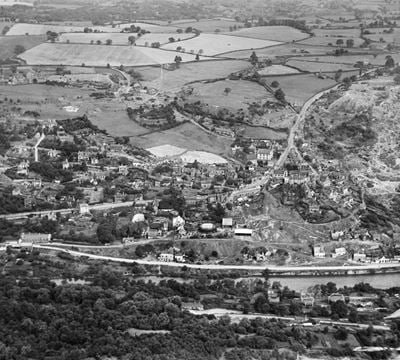
Ironbridge
Madeley Green and Brockholes, Ironbridge, 1930

Ironbridge
The River Severn in flood, Ironbridge, 1948
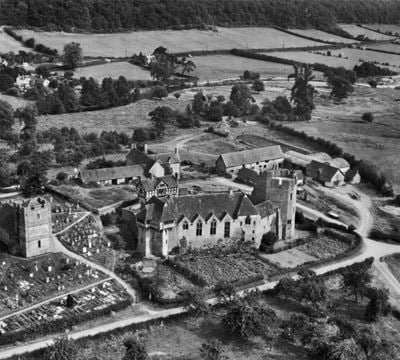
Stokesay
Stokesay Castle, the Church of St John the Baptist and Stokecastle Farm, Stokesay, 1947
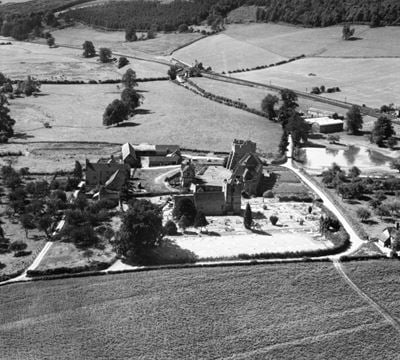
Stokesay
Stokesay Castle, Stokesay, 1948
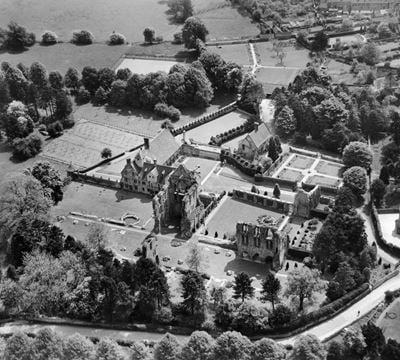
Much Wenlock
St Milburga's Priory, Much Wenlock, 1939
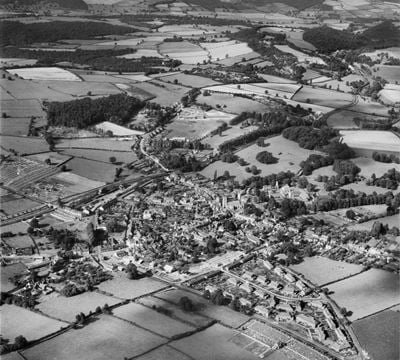
Much Wenlock
The town, Much Wenlock, 1952

Newport
St Nicholas's Church and the town centre, Newport, 1921

Newport
The Barley Mow Hotel and The Square, Newport, 1947

Worfield
Davenport House and Gardens, Worfield, 1953
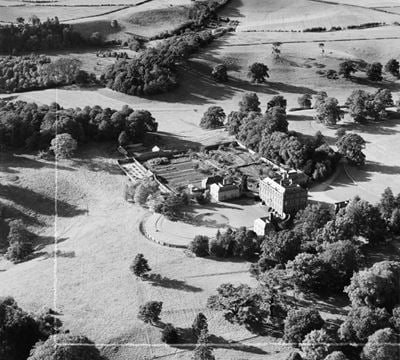
Worfield
Davenport House and Gardens, Worfield, 1953
Shropshire in the Historic England Archive
The Historic England Archive cares for over 15 million images, dating from the 1850s to the present day. Discover stunning images of Shropshire's past. Skip this section and go to stories about heritage
Charles George Harper Collection
Shropshire
Date created: 1892 - 1933
Detail showing a carved tablet dated 1581 at Ludlow Castle
Eric de Mare
Shropshire
Date created: 1945 - 1980
A ribbed arch of Ludford Bridge over the River Teme near Ludlow
John Gay Collection: Rural Life
Shropshire
Date created: 1953
An informal portrait of a hedger at work, probably in the Bridgnorth area of Shropshire, showing him laying a partially-cut hazel sapling down towards...
John Gay Collection: Counties
Shropshire
Date created: 1960s
A man and boy fishing over the parapet of Ludford Bridge, Shropshire, with a view up Lower Broad Street in Ludlow in the background
John Laing Collection
Shropshire
Date created: 21 May 1985
A stonemason holding a spirit level prior to replacing a block of stone during renovation work at the Buttercross
London, Midland and Scottish Railway Company
Shropshire
Date created: 15 Aug 1933
A view looking towards Church Stretton and the surrounding area from the east
Alfred Newton and Sons
Stokesay, Shropshire
Date created: 1896 - 1914
Exterior view from the north-west of the gatehouse, Stokesay Castle, Craven Arms
Nigel Temple Collection of Postcards of Parks and Gardens
Quarry Park, Shropshire
Date created: 1930 - 1960
GENERAL VIEW
Eric de Mare
Dinham, Shropshire
Date created: 1945 - 1980
General view of Dinham Bridge in Ludlow from an elevated position showing the river Teme in the foreground and the castle in the background.
John Gay Collection: Counties
Shropshire
Date created: 1960s
A man and boy fishing over the parapet of Ludford Bridge, Shropshire, with a view up Lower Broad Street in Ludlow in the background
John Laing Collection
Shropshire
Date created: 21 May 1985
A view from the south showing scaffolding around the Buttercross during renovation work
London, Midland and Scottish Railway Company
Dinham, Shropshire
Date created: 15 Aug 1933
A view showing Dinham Bridge from the south-west, with Ludlow Castle behind
Stories about heritage in your local area
Historic England publishes news, blogs, research, videos, and podcasts celebrating England's rich heritage. Discover the stories we have about Shropshire. Skip this section and go to education
What Happened After the End of Roman Rule in Britain?
Mentions Site of Roman town of Wroxeter (Viroconium)
After the fall of the Roman Empire in Britain around AD 410, many towns declined, industries ceased, and the Roman army left England's shores.
Battles, Castles and Ships: England’s Military History from the Air
Mentions Stokesay Castle
Discover England's military history through aerial photography from the Aerofilms Collection.
The Timeless Charm of English Market Towns and Halls
Mentions The Butter Market
Discover the history of English market towns and halls, including farmers' markets, Christmas markets, market squares and corn exchanges.
What Is the Oldest Building in England?
Mentions Site of Roman town of Wroxeter (Viroconium)
From the oldest church to archaeological remains, here are the contenders for England's oldest building.
10 Historic Sites That Tell the Story of Katherine of Aragon in England
Mentions Ludlow Castle, the standing structural remains, Ludlow Castle
Explore the significance of places visited or lived in by Katherine of Aragon, the first wife of Henry VIII.
What Is the Oldest Pub or Inn in England?
Mentions Church of St Laurence and Attached Railings, 71, 72 and 73, Wyle Cop
Many pubs and inns claim to be the oldest pub in England. Here are the facts.
A Guide to Norman Architecture in England
Mentions Wenlock Abbey
Norman architecture is a style of medieval architecture built in England following the Norman conquest in 1066.
The Bennets, the Bridgertons, and Now You: Assembly Rooms Past and Present
Mentions Assembly Rooms, Tourist Information Centre and the Starline Club
Regency romance has returned to our screens with the likes of Bridgerton and a flurry of Austen adaptions.
5 Significant Historic Sites in Shropshire
Mentions Oswestry Castle: motte and adjoining section of the town wall immediately north east of Christ Church, Former Her Majesty's Prison Shrewsbury, Quarry Park, and Dingle Gardens Shrewsbury
Much of Shropshire has connections to influential events on the national and global stage and many offer unusual heritage stories.
13 Roman Ruins to Visit in England
Mentions Site of Roman town of Wroxeter (Viroconium)
Remains of Roman Britain can be found everywhere, from walls left in our cities to forts and villas in the countryside.
10 Places That Tell Stories of Isolation
Mentions Boscobel House
Isolation and social distancing have shaped our past in many different ways.
5 Reasons to Love Historic Shropshire
Mentions Site of Roman town of Wroxeter (Viroconium), Wenlock Priory, The Iron Bridge
From the Iron Age to the Industrial revolution, Shropshire is rich with remnants from history.
Mentions Shropshire
This episode explores the innovation at a furnace in Shropshire that is said to have been the catalyst for the Industrial Revolution.
The “Birthplace of Industry”, a pioneering canal and the first factory
This episode explores the innovation at a furnace in Shropshire that is said to have been the catalyst for the Industrial Revolution. The host Dr Suzannah Lipscomb also looks at the first industrial arterial canal in Manchester and Cromford Mills in Derbyshire, known as the birthplace of the factory system. The 100 places featured in this series have been nominated by the public and chosen by a panel of judges. Together they help tell England’s fascinating history. Irreplaceable: A History of England in 100 Places is a Historic England podcast, sponsored by specialist insurer Ecclesiastical ecclesiastical.com
Research Reports Roundup February 2025
Mentions Shropshire
A roundup of the latest additions to our research reports database from October 2024 to February 2025, arranged by theme.
New Tenants at Shrewsbury Flaxmill Maltings
Mentions Shrewsbury Flaxmill Maltings: Spinning Mill
A loss adjustment and claim management company is the latest business to take offices at the multi-award-winning Shrewsbury Flaxmill Maltings.
Research Reports Roundup to February 2024
Mentions Shropshire
A roundup of new additions to the Historic England Research Reports database and a longer term overview of industrial heritage reports.
Her Majesty The Queen Visits Shrewsbury Flaxmill Maltings
Mentions Shrewsbury Flaxmill Maltings: Spinning Mill, Shrewsbury Flaxmill Maltings: Malting Kiln, Shropshire
Queen Camilla visited Shrewsbury Flaxmill Maltings as part of a wider visit to Shrewsbury.
Research Reports Roundup November 2022
Mentions Shropshire
An overview of additions to the Historic England Research Reports database from January to November 2022.
The National Pipe Archive
Mentions Shropshire
Historic England funding enables online access to digital resources and guidance notes from the National Pipe Archive.
‘Grandparent of Skyscrapers’ Shrewsbury Flaxmill Maltings Opens
Mentions Shrewsbury Flaxmill Maltings: Spinning Mill, Shrewsbury Flaxmill Maltings: Malting Kiln, Shrewsbury Flaxmill Maltings: Smithy and Office
Shrewsbury Flaxmill Maltings opens to the public following £28 million, eight-year restoration programme, as a new visitor destination and workplace.
Historic England Reveals its Heritage at Risk Register 2021
Mentions Severn Wharf Building (Premises of Ironbridge Gorge Museum Trust)
Historic England publishes its annual Heritage at Risk Register, the yearly health-check of England’s most valued historic places.
England’s Heritage Worth £31 Billion To Economy Reveals New Report
Mentions Shropshire
New research shows the value of heritage to England’s economy which contributes to economic prosperity and growth.
HemingwayDesign commissioned to reimagine Shrewsbury Flaxmill Maltings
Mentions Shropshire
HemingwayDesign commissioned to reimagine Shrewsbury Flaxmill Maltings
‘As Shadows Return’ Light Installation Brings History to Life at Shrewsbury Flaxmill Maltings
Mentions Shrewsbury Flaxmill Maltings: Spinning Mill, Shrewsbury Flaxmill Maltings: Malting Kiln, Shropshire
Art installation marks completion of the first phase of restoration at the world’s oldest iron-framed building.
23 Remarkable Places Listed in 2018
Mentions Gatehouse to former Caynton Manor, Lych Gate to the east of the Church of St John the Evangelist, Shropshire
Historic England publishes its annual highlights from more than 900 buildings and sites listed or upgraded this year.
Shropshire's social history through photos
Over 10,000 images from the Historic England Archive have been specially selected and re-captioned for teachers, students, and anyone who wants to learn more about their local area. Skip this section and go to grant-aided places
Wyle Cop, Shrewsbury, Shropshire
Period: Victorian (1837 - 1901)
Looking south down Wyle Cop, towards numbers 70-73.
Wyle Cop, Shrewsbury, Shropshire
Workshop, Jackfield Tile Museum, Ironbridge, Shropshire
Period: Victorian (1837 - 1901)
This workshop was built for the Craven Dunnill Tile Company in the 1870s.
Workshop, Jackfield Tile Museum, Ironbridge, Shropshire
White Abbey, Alberbury, Shropshire
Period: Medieval (Middle Ages) (1066 - 1484)
An abbey was founded here in 1221-1226. It was as an Augustinian Monastery dependent on Lilleshall Abbey.
White Abbey, Alberbury, Shropshire
Wesleyan Infant School, Ironbridge, Telford and Wrekin
Period: Victorian (1837 - 1901)
This Wesleyan Infant School was built in 1851. It is in the Gothic Revival style of architecture.
Wesleyan Infant School, Ironbridge, Telford and Wrekin
Watch Tower, Shrewsbury, Shropshire
Period: Medieval (Middle Ages) (1066 - 1484)
This Watch Tower was built in the 13th century. It was built as part of the Town Walls. It has arrow slit windows.
Watch Tower, Shrewsbury, Shropshire
War Memorial, Alberbury, Shropshire
Period: World War One (1914 - 1919)
This war memorial was built in 1919. It was added to in 1945.
War Memorial, Alberbury, Shropshire
Urinal, Minsterley, Shropshire
Period: Victorian (1837 - 1901)
This public urinal was built in the late 19th century. The iron urinal was made by Walter Macfarlane & Co at the Saracen Foundry in Glasgow.
Urinal, Minsterley, Shropshire
Turnip Lock, Hadley, Telford and Wrekin
Period: Georgian (1714 - 1836)
This is a lock on the now disused Shrewsbury Canal. The canal was begun in 1793 by Joseph Clowes.
Turnip Lock, Hadley, Telford and Wrekin
Visit grant-aided places near you
These places and buildings have been helped by Historic England's financial grants. Find historic places in your neighbourhood that you never knew existed! Please note that opening times may vary. Skip this section and go to related locations
Town Walls, Ludlow
The Castle Square Car Park Retaining Wall is a section of the medieval Ludlow Town Wall, around 700 years old and designated as a scheduled ancient...
Bedlam Furnace, Ironbridge
Built in 1756-1757 by Madeley Wood Co, this coke-blast furnace is historically crucial, among the earliest in the UK for coke smelting.
Discover more
Ready for more local heritage? Take a look at these other places nearby


